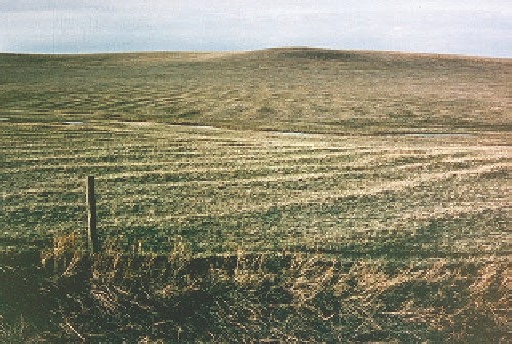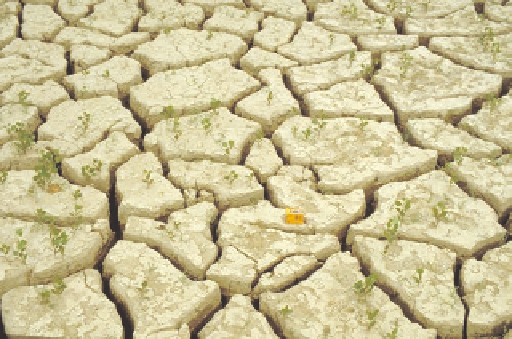Geoscience Reference
In-Depth Information
environmental association, these soils form through a variant of
the laterization system and are similar to Oxisols in their red-
dish color (Figure 11.24b) and low base concentration.
The primary difference between Oxisols and Ultisols is
that Ultisols are a bit more fertile because they are not as heav-
ily leached. This relative lack of weathering happens because
Ultisols occur in regions that experience a dry season. Ultisols
also contain a distinct argillic (Bt) horizon, resulting from the
translocation of clays. Some Ultisols have Bt horizons that
contain as much as 70% clay. They support productive forests
but require the frequent addition of lime fertilizers if they are
used for continuous agriculture. In this manner, many Ultisols
in the southeastern United States have been farmed for over
200 years.
Vertisols
A third soil order that frequently occurs in the
tropical and subtropical regions is
Vertisols
.
These soils are
found on about 2% of the ice-free land surface on Earth, includ-
ing some areas outside of the tropics (Figures 11.25a, b). The
primary soil-forming factor associated with Vertisols is par-
ent material because they contain an abundance of expandable
clays, which are clays that swell like a sponge when they are
wet and shrink when they dry. Because these soils contain so
much clay, fields that lie within Vertisol soils are typically dark
with very strong structure.
Vertisols
Soils that contain an abundance of expandable clay
and thus swell and shrink during wet and dry cycles, respectively.
Global distribution of Vertisols
(a)
(d)
(c)
(b)
Figure 11.25 Vertisols.
(a) Generalized map of Vertisols on Earth. These soils occur on about 2% of Earth's ice-free land area.
(
Source:
U.S.
Department of Agriculture.) (b) A Vertisol landscape in South Dakota. The small humps and ridges are known as “gilgai” and form due to
frequent expansion and contraction of clays. (c) Ground cracks that resulted from contraction of expandable clays in a Vertisol. (d) A Ver-
tisol in New Mexico. Note the strong structure (due to high clay content) in the upper part of the profile and the cracks in the ground. The
horizontal grooves in the lower part of the profile were made by the backhoe that excavated the trench.






























































































































































































